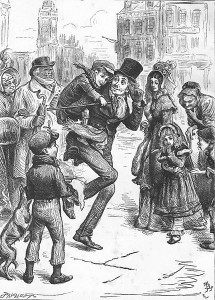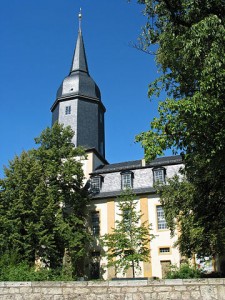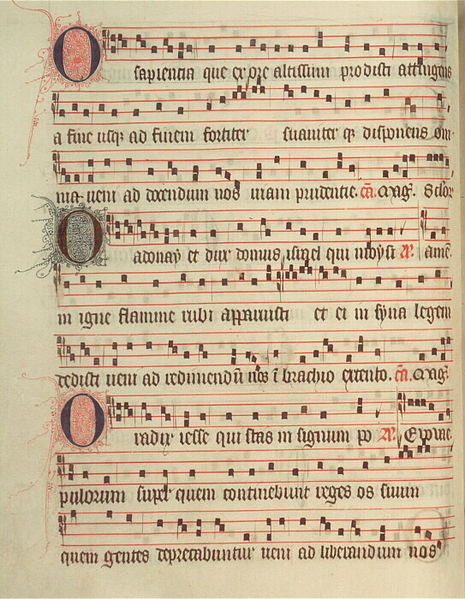By Professor Carol on Dec 25, 2015 04:00 am
By the time you read this post, it may be December 26 or 27. Christmas, they say, is over.
They’re wrong. We’re still at the beginning of Christmas, despite what the commercial world says. Our modern culture has forgotten the actual parameters of the Christmas Season, namely the eve of December 24 to January 6.
Ordinarily, our December 25th post features one of my favorite choral pieces: J.S. Bach’s Christmas Oratorio.It’s a compendium of six half-hour long works designed for six specific services within the twelve-day Christmas season. The premise, of course, was that members of Bach’s congregation would be attending those services. And they looked forward to a new, topically appropriate composition at each.
If Bach were writing today, he’d have to squeeze hisChristmas Oratorio into sound bites. Perhaps two arias and a chorus for Christmas Eve and something shorter for Christmas Day. After that, well, maybe Bach could just stream the music to our iPhones.
Because the “post-Christmas” season has begun. Gotta get to bed early and up before dawn for those fabulous sales.
 Hey, why wait until the 26th? Why not start the sales on Christmas Day? Our local Family Dollar Store out here in Bowie TX has a banner flapping in the wind: “Open on Christmas Day.” I couldn’t believe it.
But Christmas Day is the new catch for retailers. After all, retailers snagged Thanksgiving Day pretty easily, didn’t they? I asked inside the store: “Why are you opening on Christmas?” One employee sadly said, “Some people forget to buy batteries.”
Destroy the only haven left—the quietude of Christmas Day—so that a few people can buy batteries? Worse, employees have no choice, church services or families events not withstanding.
Didn’t we go through this with Charles Dickens’ A Christmas Carol? We cluck our tongues, thinking of how cruel that Mr. Scrooge was to force poor Bob Cratchit to slave on Christmas Eve. But we are returning to precisely that system.

Bob and Tim Cratchit
You can argue that people in the medical field and hotel/restaurant industry have always worked on Christmas Day. But that is a far cry from forcing the cash register lady to pre-cook her dinner, forego church, and race off to work by 10 a.m. All because people need batteries.
Let’s talk about those batteries. One of the greatest lessons of my life came in December 1981. I was studying in Leningrad, but had flown to Germany on the 23rd to celebrate Christmas. We went to the square the next morning about 11 a.m, ready to elbow ourselves into the crowd. To our astonishment, the stores were virtually empty. Most were closing at noon or hadn’t opened at all. There were no lines, no frantic pushes or pulls. People had . . . (ready for this?) . . . planned ahead and bought what they needed already.
Is that possible? Yes. And here’s why. Germans, and many Europeans, keep a traditional approach to Christmas. Bargains and “stuff” aren’t the focus. Plus, if a goose traditionally is prepared for First Christmas Day dinner and a venison roast for Second Christmas Day, one can think ahead and buy whatever traditional trimmings are needed, whether red cabbage or potato dumplings. It’s the same menu each year. The modest stash of presents within the family was wrapped long ago. People already have stocked up on milk and batteries. So what is left to worry over? Nothing.
I never forgot that lesson. It spurred a personal goal to change how I “do” Christmas. I pledged to decelerate it and try to reclaim the time frame known as The Twelve Days of Christmas. One part of this effort has been learning to celebrate Advent. An outgrowth of that has been our Advent Calendar. Thank you for letting me share these daily posts with you.
A second part is trying, at least, to stretch the joy of Christmas across its proper liturgical season: December 25 to January 6—the actual Twelve Days sung about in Carols. Give it a try. Don’t apologize for sending cards and gifts to arrive during the Twelve Days. Invite people for Christmas parties after the 25th: schedules will be less hectic and people will be able to enjoy themselves.
Most of all, find small things to treasure during those twelve days. Bake and give more cookies. Enjoy a leisurely game of Scrabble. Find Christmas displays that stay up until New Year’s (arboretums, zoos, fair grounds, even NASCAR race tracks). Do leave the tree up.
And for those of you who attend services, seek out extra ones. It could be Morning Prayer or Evensong. Maybe there’s a weekly service at the Salvation Army that you otherwise wouldn’t know about. Attend daily Mass, or listen at home to the topical readings that unfold the complete cycle of the Nativity story. Do whatever you can to remember that Christmas is aseason of rejoicing.
Aim for modest goals, and don’t be surprised if you find far more opportunities than you expect. Give yourself and your family the gift of a leisurely, lovely Christmas Season. No matter what the commercial world says. Merry Christmas (a long one), and Happy New Year!
Read in browser »
 
Recent Articles:
|
|
By Professor Carol on Dec 24, 2015 04:00 am

Die Jakobskirche in Weimar, R. Möhler (CC BY-SA 3.0)
Some people deride Christmas pageants, viewing them as a seasonal entertainment for overly sugared kids and exhausted parents. But the tradition is long and noble, dating arguably back to a live nativity scene staged by St. Francis in 1223.
Still, I never sensed the magnificence of Christmas pageants until my first occasion to see one in the small city of Weimar, Germany. It was Christmas Eve and the place was the Jakobskirche (Jacob Church), a small church near the ring-street that was the “moat” back in the days of knights and castles.
The church has a wonderful history. The cornerstone dates from the 1180s, while the interior is a delicate but simple Baroque wash. The poet Johann von Goethe was married in the Sacristy. J.S. Bach, who worked in Weimar, knew this church well. But to me, the most interesting part of its history came in 1806, when the nave became an infirmary during the bloody Battle of Jena in the Napoleonic Wars.
Scanning the balconies filled with excited families straining to see their costumed children below, I tried to imagine those same balconies more than 200 years earlier when German and French soldiers lay in agony. It was hard to envision. All around me was the magic of Christmas Eve, complete with the hush of snow. Yet, the modern children before me were likely speaking the same pageant lines as children back in Bach’s time. I was transfixed by one boy in a fleecy shepherd’s cloak, standing inches from the wall candles that illuminate the church. “Yikes,” I thought, “how many centuries have nine-year olds stood on this same spot, oblivious of the blaze behind their heads?”
But isn’t that the power of tradition? We repeat the same acts of devotion perfected by our forefathers. We recite the same lines and sew the same costumes. And by passing this long chain of tradition to our children, we knit our families to those who came before us. And we equip our children to take our faith more strongly into the future.
Read in browser »
 
Recent Articles:
|
|
|
|
|
|
|
|
| 




No comments:
Post a Comment